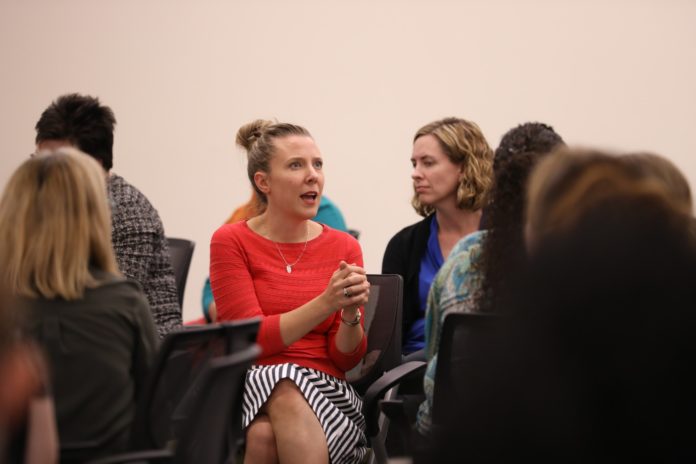
By Phoebe Suy | Staff Writer
Women face unique challenges in the world of academia, particularly when it comes to the path of becoming a full tenured professor. On Wednesday a panel of Baylor professors shared their journeys of being a spouse, mother, administrator, professor and scholar at “Women’s Paths to Full Professor: Promotion Successes.”
“Nationally and at Baylor we have many women moving through the process of tenure track and promotion at all different levels and there are unique issues or challenges that sometimes are presented to the women population that might not impact the men in the same way,” said Dr. Robyn Driskell, chief of staff to President Linda Livingstone and vice president of board relations
The “Women’s Paths” panel was facilitated by Driskell. Members of the panel included women who successfully navigated the path from associate to full professor: professor of English Dr. Sarah Ford, associate dean and professor of information systems Dr. Cindy Riemenschneider, professor of physics Dr. Lorin Matthews and professor and associate chair of theater arts Dr. DeAnna Toten Beard.
“There’s a real value in hearing stories, hearing others’ narratives,” Driskell said. “So my hope today is by hearing their stories, you can take something away – a tip, a tidbit, that will work for me, that won’t work for me. We’re a support for each other as we’re all moving along similar paths.”
As a scholar in the STEM (science, technology, engineering and mathematics) field, Riemenschneider said she felt very strongly about paying it forward for the women that influenced her in the information systems discipline. She said she hopes to return some of that influence and support to her female colleagues.
“I was extremely intentional with networking with other women in particular and senior faculty when I went to different conferences for my discipline,” Riemenschneider said. “Building that network was extremely important and I was extremely intentional with the network I built.” Riemenschneider has led a women’s networking event for the last four years.
While networking with colleagues within a discipline is an essential part of moving from associate to full professor, a couple of the panel members noted a department’s culture played a role in the promotion process.
“I had a very supportive department culture and moreover, I had a colleague who came in the same year I did, but came in further along the tenure clock,” Toten Beard said. “We navigated together and that was really helpful.”
On the other hand, Ford said she didn’t join the Baylor faculty with promotion in her sights, perhaps on account of her department’s culture. While Ford said she enjoyed her teaching and administrative roles, she still considered research to be something she did on the side.
At the time, all the full professors in her department were men who were promoted before she came to Baylor. Because her department didn’t have promotion guidelines until this past year, she didn’t know what her colleagues had done to be promoted.
“My particular field is Southern literature, and in the past decade there have been so many interesting innovations in my field and I simply wanted to be a part of that conversation. I wanted to contribute to that,” Ford said.
Ford said she began to consider tenure more seriously when she saw colleagues at other universities publishing their work at a different pace.
After 11 years, Ford is a full professor nearing the end of her second book. She said she would encourage women interested in the promotion to full professor to take the time they need.
“If you’re going to walk instead of sprint, you can eventually cross that line anyway. There is no gun to your head; there is no time limit,” Ford said.
Matthews started at Baylor in 2000 as a lecturer and research scientist in a tenure track position, but she was not on a tenure track. In 2006, she was hired into a tenure track position in the physics department and spent the next six years going through the tenure process.
Matthews said last year there was only one female full professor in all of STEM which served as an impetus for her to promote herself early.
“I had four children while I was on the tenure track. Actually, the twins were born before,” Matthews said. “It is possible to do that. It takes a little bit more structure of your time, but you can do it. Multiple of us have done it and you can do it.”





